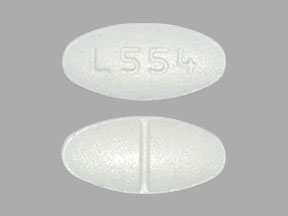
Fluoxetine Coupons & Savings Card – Discount Prices from $7.16
Generic for: Prozac
My prescription
Edit
20MG, Fluoxetine (30 Tablets)
Select pharmacy

CVS
$19.23
COUPON PRICE
Walmart
$7.16
COUPON PRICE
Walgreens
$12.60
COUPON PRICE
Albertsons
$12.83
COUPON PRICEFluoxetine savings card
Show this card to your pharmacist
Walmart
$7.16
BIN
ID
PCN
GRP
019876
LHCF83ABAF
CHIPPO
LHX
Powered by
More prescriptions for ptsd
More prescriptions for ptsd
Price history for Prozac (brand) & Fluoxetine (generic)
30 Tablets, 20MG
Average retail price for Prozac
Average retail price for Fluoxetine
Average SaveHealth price for Fluoxetine
Our price history data is based on aggregated prescription data collected from participating pharmacies in America. Our prescription data updates daily to reflect the latest price changes. If you notice a missing data point, it means there wasn't sufficient data available to generate a monetary value for that date.
We analyzed Fluoxetine prices for (20MG, 30 Tablets) over the last 12 months. The average retail price was $57.25, while the average price using the SaveHealth discount card was $21.67. That's a savings of approximately 62.15% when using our Fluoxetine coupon.
Compared to the generic version, Prozac had an average price of $1681.92 over the same time period. With the SaveHealth savings card, Fluoxetine is 98.71% cheaper on average than Prozac.
*Retail prices are based on pharmacy claims data, and may not be accurate when we don't have enough claims.
Fluoxetine dosage forms
Dosage Quantity Price from Per unit 10MG 14 Tablets $4.91 $0.35 10MG 30 Tablets $7.66 $0.26 10MG 60 Tablets $19.32 $0.32 10MG 90 Tablets $21.69 $0.24 10MG 100 Tablets $22.10 $0.22 10MG 1000 Tablets $59.00 $0.06 20MG 30 Tablets $7.16 $0.24 20MG 60 Tablets $11.83 $0.20 20MG 90 Tablets $21.69 $0.24 20MG 100 Tablets $22.10 $0.22
| Dosage | Quantity | Price from | Per unit |
|---|---|---|---|
| 10MG | 14 Tablets | $4.91 | $0.35 |
| 10MG | 30 Tablets | $7.66 | $0.26 |
| 10MG | 60 Tablets | $19.32 | $0.32 |
| 10MG | 90 Tablets | $21.69 | $0.24 |
| 10MG | 100 Tablets | $22.10 | $0.22 |
| 10MG | 1000 Tablets | $59.00 | $0.06 |
| 20MG | 30 Tablets | $7.16 | $0.24 |
| 20MG | 60 Tablets | $11.83 | $0.20 |
| 20MG | 90 Tablets | $21.69 | $0.24 |
| 20MG | 100 Tablets | $22.10 | $0.22 |
| 60MG | 30 Tablets | $17.42 | $0.58 |
Fluoxetine Warnings
Fluoxetine may interact with many medications and supplements, making it important to discuss all medicines, including prescription drugs, over-the-counter products, vitamins, and herbal supplements, with your doctor or pharmacist before starting treatment. Because fluoxetine remains in the body for weeks after the last dose, certain precautions are necessary to avoid serious drug interactions.
One of the key risks with fluoxetine is its potential to interact with monoamine oxidase inhibitors (MAOIs), such as isocarboxazid, linezolid, methylene blue, moclobemide, phenelzine, procarbazine, rasagiline, safinamide, selegiline, and tranylcypromine. Most MAOIs should not be taken for at least 2 weeks before starting fluoxetine, and fluoxetine should not be started until at least 2 weeks after stopping an MAOI. After stopping fluoxetine, at least 5 weeks should pass before starting an MAOI. Failing to follow these guidelines can lead to a dangerous drug interaction.
Fluoxetine can also increase the effects of drugs that increase serotonin, such as other selective serotonin reuptake inhibitors (SSRIs), serotonin-norepinephrine reuptake inhibitors (SNRIs), certain antidepressants, St. John’s wort, and MDMA (ecstasy), which can raise the risk of serotonin syndrome. The risk of this condition may be higher when starting or increasing the dose of these medications.
This medication can slow down how the body eliminates other drugs, which may affect how those drugs work. Examples include some antiarrhythmic drugs (such as propafenone, flecainide), tricyclic antidepressants (such as desipramine and imipramine), pimozide, thioridazine, and vinblastine. Fluoxetine can also interact with medicines that increase bleeding or bruising risk, such as NSAIDs (ibuprofen, naproxen), antiplatelet drugs (clopidogrel), and blood thinners (dabigatran, warfarin). If you are taking low-dose aspirin for heart conditions, continue only as directed by your doctor.
Fluoxetine may make you drowsy, especially when taken with alcohol, marijuana, antihistamines, anxiety medicines, sleep aids, muscle relaxants, or opioid pain relievers. Check with your pharmacist before using any products that may cause drowsiness in combination with fluoxetine.
Before undergoing any medical or laboratory tests, let your healthcare providers know you are taking fluoxetine, as it may interfere with certain test results. Always follow your healthcare provider’s instructions to ensure safe and effective use of this medication. If you experience any symptoms or have concerns about side effects, contact your doctor promptly.
Fluoxetine Side Effects
Common side effects:
- Nausea
- Headache
- Weakness
- Diarrhea
- Low appetite
- Drowsiness
- Anxiety
- Nervousness
- Tremor
- Dry mouth
- Throat pain
- Yawning
Less common but important to monitor:
- Abnormal dreams
- Flu-like symptoms
- Allergic rash
- Low blood sodium levels
- Blood sugar fluctuations
Serious side effects:
- Suicidal thoughts or behaviors
- Serotonin syndrome
- Seizures
- Allergic reaction
- Severe bleeding
- Prolonged or painful erection
Fluoxetine Interactions
Interactions with high risk of serious adverse effects and should be avoided:
- MAO inhibitors (isocarboxazid, Linezolid, Metaxalone, methylene blue, moclobemide, phenelzine, procarbazine, Rasagiline, safinamide, Selegiline, Tranylcypromine)
- Pimozide
- Thioridazine
Interactions with moderate risk that may require dose adjustment, closer monitoring, or timing changes:
- Antiplatelet drugs (Clopidogrel)
- NSAIDs (Ibuprofen, Naproxen)
- Blood thinners (Dabigatran, Warfarin)
- Serotonin-increasing drugs (MDMA, Citalopram, paroxetine, Duloxetine, Venlafaxine)
Interactions with low risk that usually do not require a change in therapy:
- Alcohol
- Marijuana (cannabis)
- Antihistamines (Cetirizine, diphenhydramine)
- Drugs for sleep or anxiety (Alprazolam, Diazepam, Zolpidem)
- Muscle relaxants
- Opioid pain relievers (codeine)
